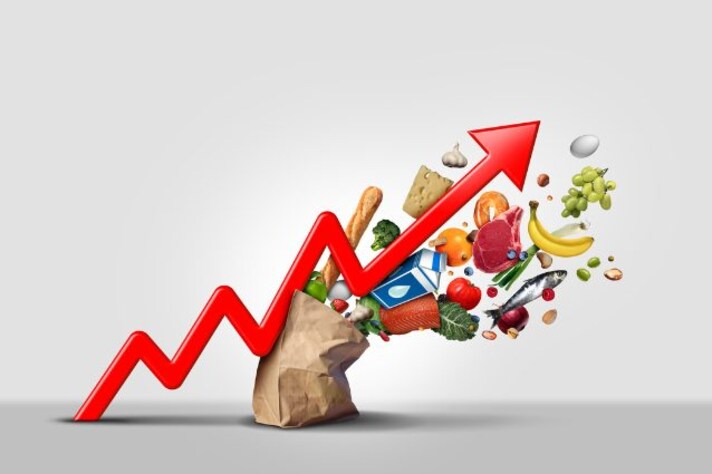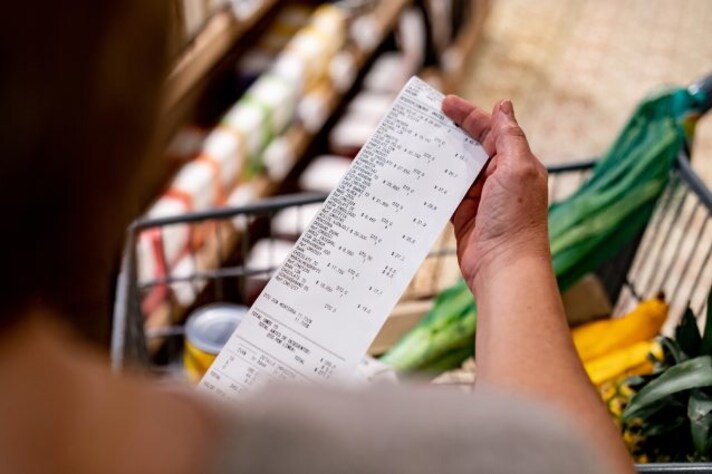Which Cities in The U.S. Have the Worst Food Inflation?
Food inflation is hitting hardest in cities like Chicago, Detroit, and Atlanta, where rising meat, dairy, and produce prices are making groceries more expensive. Low-income households are bearing the brunt, with many turning to food banks or choosing farmers' markets and local co-ops.

It’s a tough time to be a grocery shopper in America. While prices at the pump may be stabilizing, food inflation continues to climb, putting a strain on families across the country. The culprit? A perfect storm of supply chain issues, labor shortages, and unpredictable weather patterns all compounded by the ongoing aftermath of the pandemic. But not all cities are suffering equally—some are feeling the sting of high food prices more than others.
The Cities Feeling the Heat
When it comes to food inflation, it’s not just a national trend; it’s regional. A recent study found that cities in the Midwest and South are particularly vulnerable to the price hikes. Cities like Chicago, Detroit, and Atlanta are showing significant spikes in food costs, with Chicago topping the charts in some reports. These regions are grappling with a combination of rising food transportation costs (due to higher fuel prices) and local economic shifts. For instance, in Chicago, the higher cost of living has led to a general price increase across the board, but food prices have been particularly noticeable at the grocery store and restaurants.
Southern cities like New Orleans and Dallas aren’t far behind either. The impact of a hotter climate on crops, combined with economic instability in certain sectors, has made food a larger chunk of many residents’ monthly budgets. This isn't just about higher costs at fancy eateries; it’s the everyday, staple items that are making the biggest dent in people's wallets.

Why Cities Aren’t Feeling the Same Pinch?
Why are some cities in the U.S. suffering more than others? It boils down to a few key factors: location, income disparity, and local economic conditions. Cities like San Francisco and Los Angeles already have high living costs, so food inflation is just another round of price hikes that residents are forced to absorb. On the flip side, cities with a lower cost of living, such as Cleveland or St. Louis, aren’t feeling as much of the strain.
The situation is also more dire in places where wages have stagnated or haven't kept up with inflation. Cities like Miami, with a growing population but stagnant wage growth, are seeing a disproportionate number of people struggling to afford basic food. In these cities, it’s not just about the cost of food—it’s about the increased economic pressure on lower-income families.
Foods That Are Getting a Serious Price Lift
It’s not just a slight uptick in food prices; some items have seen truly jaw-dropping price hikes over the past year. Among the most affected are meats, dairy, and fresh produce. With supply chain disruptions, rising fuel costs, and the impacts of climate change, these foods have taken the brunt of inflation.
- Meats: Whether it’s chicken, beef, or pork, meat prices have skyrocketed. The cost of beef, for example, has reached record highs due to supply chain issues and labor shortages in the meatpacking industry. If you’re a regular steak eater, be prepared to pay up. Ground beef is also taking a significant leap, particularly in cities with limited access to wholesale markets.

- Dairy: Another sector that’s taken a hit is dairy, particularly milk, cheese, and eggs. In cities like New York and Chicago, the cost of these staples has risen faster than inflation overall. The price increase is being attributed to rising feed costs for dairy cows and labor shortages affecting milk production.
- Fresh Produce: While meat and dairy prices have been climbing steadily, fresh fruits and vegetables are often subject to the whims of the weather. In 2023, cities in the Southwest—Phoenix and Las Vegas in particular—saw astronomical jumps in the cost of produce, especially as heat waves affected crops. The drought in California, which grows much of the country’s produce, has worsened supply chain issues and sent prices of everything from lettuce to tomatoes soaring.
The Price Tag of Dining in Big Cities
For those who prefer dining out over cooking at home, food inflation is raising prices in restaurants as well. In New York City, Los Angeles, and Chicago, restaurant owners have been forced to pass on their increased ingredient costs to customers. You might be paying $15 for a burger that used to cost $12 just last year. From higher prices for daily specials to a jump in the cost of fine dining, eating out has become an expensive proposition, particularly in areas already known for their high cost of living.
Restaurant owners are also grappling with labor shortages and increased wages, adding further pressure to their bottom lines. As a result, they’re raising prices to cover the costs, and, unfortunately, customers are left picking up the tab. The rise in food delivery service fees has also been a factor—people are paying more to have their food delivered than they ever did before.
What About Grocery Stores?
If dining out isn’t your thing and you prefer to cook at home, then the grocery store is where you'll feel the inflation hit the hardest. In cities like Dallas and Atlanta, where lower-income families are already struggling to make ends meet, grocery bills are rising faster than ever. The price of a typical grocery cart, which used to contain the basics like bread, milk, eggs, and vegetables, is now up to 20% higher than it was last year.

Staple items such as bread, cereal, and coffee are also seeing price hikes in certain regions, as manufacturers struggle with supply chain issues. Even frozen foods, long a budget-friendly option for families, have been subject to price increases. As consumers seek more affordable options, discount stores and bulk retailers like Costco have seen a rise in traffic. But for many people, even the bulk pricing is no match for inflation’s effect on their food bills.
What’s Being Done to Tackle the Rising Costs?
With food inflation showing no signs of slowing down, local governments and private organizations are stepping in to help those most affected. From food banks to subsidized meal programs, there are initiatives in place to support vulnerable populations. However, they can only do so much.
Some cities have taken steps to incentivize local farming and food production in an effort to offset costs. For example, Los Angeles has been pushing for more urban farming initiatives to provide residents with fresh produce at lower costs. Other cities have tried to expand access to farmers' markets or local co-ops, which sometimes offer more affordable and fresher alternatives to grocery stores.
;Resize,width=767;)


;Resize,width=712;)
